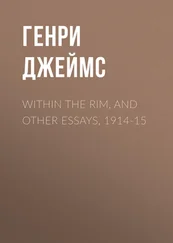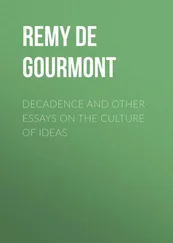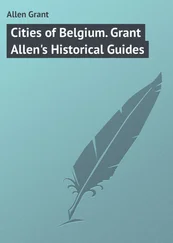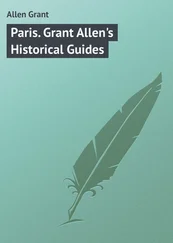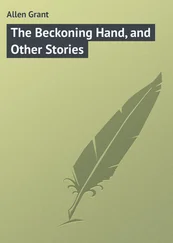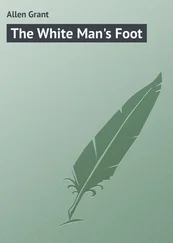Grant Allen - Falling in Love; With Other Essays on More Exact Branches of Science
Здесь есть возможность читать онлайн «Grant Allen - Falling in Love; With Other Essays on More Exact Branches of Science» — ознакомительный отрывок электронной книги совершенно бесплатно, а после прочтения отрывка купить полную версию. В некоторых случаях можно слушать аудио, скачать через торрент в формате fb2 и присутствует краткое содержание. Жанр: popular_business, foreign_edu, Прочая научная литература, на английском языке. Описание произведения, (предисловие) а так же отзывы посетителей доступны на портале библиотеки ЛибКат.
- Название:Falling in Love; With Other Essays on More Exact Branches of Science
- Автор:
- Жанр:
- Год:неизвестен
- ISBN:нет данных
- Рейтинг книги:4 / 5. Голосов: 1
-
Избранное:Добавить в избранное
- Отзывы:
-
Ваша оценка:
- 80
- 1
- 2
- 3
- 4
- 5
Falling in Love; With Other Essays on More Exact Branches of Science: краткое содержание, описание и аннотация
Предлагаем к чтению аннотацию, описание, краткое содержание или предисловие (зависит от того, что написал сам автор книги «Falling in Love; With Other Essays on More Exact Branches of Science»). Если вы не нашли необходимую информацию о книге — напишите в комментариях, мы постараемся отыскать её.
Falling in Love; With Other Essays on More Exact Branches of Science — читать онлайн ознакомительный отрывок
Ниже представлен текст книги, разбитый по страницам. Система сохранения места последней прочитанной страницы, позволяет с удобством читать онлайн бесплатно книгу «Falling in Love; With Other Essays on More Exact Branches of Science», без необходимости каждый раз заново искать на чём Вы остановились. Поставьте закладку, и сможете в любой момент перейти на страницу, на которой закончили чтение.
Интервал:
Закладка:
It is only in external matters, however, that the appearance of such mimetic species can ever be altered. Their underlying points of structure and formative detail always show to the very end (if only one happens to observe them) their proper place in a scientific classification. For instance, these same parasitic flies which so closely resemble bees in their shape and colour have only one pair of wings apiece, like all the rest of the fly order, while the bees of course have the full complement of two pairs, an upper and an under, possessed by them in common with all other well-conducted members of the hymenopterous family. So, too, there is a certain curious American insect, belonging to the very unsavoury tribe which supplies London lodging-houses with one of their most familiar entomological specimens; and this cleverly disguised little creature is banded and striped in every part exactly like a local hornet, for whom it evidently wishes itself to be mistaken. If you were travelling in the wilder parts of Colorado you would find a close resemblance to Buffalo Bill was no mean personal protection. Hornets, in fact, are insects to which birds and other insectivorous animals prefer to give a very wide berth, and the reason why they should be imitated by a defenceless beetle must be obvious to the intelligent student. But while the vibrating wing-cases of this deceptive masquerader are made to look as thin and hornet-like as possible, in all underlying points of structure any competent naturalist would see at once that the creature must really be classed among the noisome Hemiptera. I seldom trouble the public with a Greek or Latin name, but on this occasion I trust I may be pardoned for not indulging in all the ingenuous bluntness of the vernacular.
Sometimes this effective mimicry of stinging insects seems to be even consciously performed by the tiny actors. Many creatures, which do not themselves possess stings, nevertheless endeavour to frighten their enemies by assuming the characteristic hostile attitudes of wasps or hornets. Everybody in England must be well acquainted with those common British earwig-looking insects, popularly known as the devil's coach-horses, which, when irritated or interfered with, cock up their tails behind them in the most aggressive fashion, exactly reproducing the threatening action of an angry scorpion. Now, as a matter of fact, the devil's coach-horse is quite harmless, but I have often seen, not only little boys and girls, but also chickens, small birds, and shrew-mice, evidently alarmed at his minatory attitude. So, too, the bumble-bee flies, which are inoffensive insects got up in sedulous imitation of various species of wild bee, flit about and buzz angrily in the sunlight, quite after the fashion of the insects they mimic; and when disturbed they pretend to get excited, and seem as if they wished to fly in their assailant's face and roundly sting him. This curious instinct may be put side by side with the parallel instinct of shamming dead, possessed by many beetles and other small defenceless species.
Certain beetles have also been modified so as exactly to imitate wasps; and in these cases the beetle waist, usually so solid, thick, and clumsy, grows as slender and graceful as if the insects had been supplied with corsets by a fashionable West End house. But the greatest refinement of all is perhaps that noticed in certain allied species which mimic bees, and which have acquired useless little tufts of hair on their hind shanks to represent the dilated and tufted pollen-gathering apparatus of the true bees.
I have left to the last the most marvellous cases of mimicry of all—those noticed among South American butterflies by Mr. Bates, who found that certain edible kinds exactly resembled a handsome and conspicuous but bitter-tasted species 'in every shade and stripe of colour.' Several of these South American imitative insects long deceived the very entomologists; and it was only by a close inspection of their structural differences that the utter distinctness of the mimickers and the mimicked was satisfactorily settled. Scarcely less curious is the case of Mr. Wallace's Malayan orioles, two species of which exactly copy two pugnacious honey-suckers in every detail of plumage and coloration. As the honey-suckers are avoided by birds of prey, owing to their surprising strength and pugnacity, the orioles gain immunity from attack by their close resemblance to the protected species. When Dr. Sclater, the distinguished ornithologist, was examining Mr. Forbes's collections from Timorlaut, even his experienced eye was so taken in by another of these deceptive bird-mimicries that he classified two birds of totally distinct families as two different individuals of the same species.
Even among plants a few instances of true mimicry have been observed. In the stony African Karoo, where every plant is eagerly sought out for food by the scanty local fauna, there are tubers which exactly resemble the pebbles around them; and I have little doubt that our perfectly harmless English dead-nettle secures itself from the attacks of browsing animals by its close likeness to the wholly unrelated, but well-protected, stinging-nettle.
Finally, we must not forget the device of those animals which not merely assimilate themselves in colour to the ordinary environment in a general way, but have also the power of adapting themselves at will to whatever object they may happen to lie against. Cases like that of the ptarmigan, which in summer harmonises with the brown heather and grey rock, while in winter it changes to the white of the snow-fields, lead us up gradually to such ultimate results of the masquerading tendency. There is a tiny crustacean, the chameleon shrimp, which can alter its hue to that of any material on which it happens to rest. On a sandy bottom it appears grey or sand-coloured; when lurking among seaweed it becomes green, or red, or brown, according to the nature of its momentary background. Probably the effect is quite unconscious, or at least involuntary, like blushing with ourselves—and nobody ever blushes on purpose, though they do say a distinguished poet once complained that an eminent actor did not follow his stage directions because he omitted to obey the rubrical remark, 'Here Harold purples with anger.' The change is produced by certain automatic muscles which force up particular pigment cells above the others, green coming to the top on a green surface, red on a ruddy one, and brown or grey where the circumstances demand them. Many kinds of fish similarly alter their colour to suit their background by forcing forward or backward certain special pigment-cells known as chromatophores, whose various combinations produce at will almost any required tone or shade. Almost all reptiles and amphibians possess the power of changing their hue in accordance with their environment in a very high degree; and among certain tree-toads and frogs it is difficult to say what is the normal colouring, as they vary indefinitely from buff and dove-colour to chocolate-brown, rose, and even lilac.
But of all the particoloured reptiles the chameleon is by far the best known, and on the whole the most remarkable for his inconstancy of coloration. Like a lacertine Vicar of Bray, he varies incontinently from buff to blue, and from blue back to orange again, under stress of circumstances. The mechanism of this curious change is extremely complex. Tiny corpuscles of different pigments are sometimes hidden in the depths of the chameleon's skin, and sometimes spread out on its surface in an interlacing network of brown or purple. In addition to this prime colouring matter, however, the animal also possesses a normal yellow pigment, and a bluish layer in the skin which acts like the iridium glass so largely employed by Dr. Salviati, being seen as straw-coloured with a transmitted light, but assuming a faint lilac tint against an opaque absorbent surface. While sleeping the chameleon becomes almost white in the shade, but if light falls upon him he slowly darkens by an automatic process. The movements of the corpuscles are governed by opposite nerves and muscles, which either cause them to bury themselves under the true skin, or to form an opaque ground behind the blue layer, or to spread out in a ramifying mass on the outer surface, and so produce as desired almost any necessary shade of grey, green, black, or yellow. It is an interesting fact that many chrysalids undergo precisely similar changes of colour in adaptation to the background against which they suspend themselves, being grey on a grey surface, green on a green one, and even half black and half red when hung up against pieces of particoloured paper.
Читать дальшеИнтервал:
Закладка:
Похожие книги на «Falling in Love; With Other Essays on More Exact Branches of Science»
Представляем Вашему вниманию похожие книги на «Falling in Love; With Other Essays on More Exact Branches of Science» списком для выбора. Мы отобрали схожую по названию и смыслу литературу в надежде предоставить читателям больше вариантов отыскать новые, интересные, ещё непрочитанные произведения.
Обсуждение, отзывы о книге «Falling in Love; With Other Essays on More Exact Branches of Science» и просто собственные мнения читателей. Оставьте ваши комментарии, напишите, что Вы думаете о произведении, его смысле или главных героях. Укажите что конкретно понравилось, а что нет, и почему Вы так считаете.




